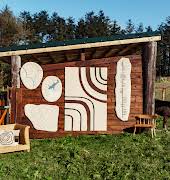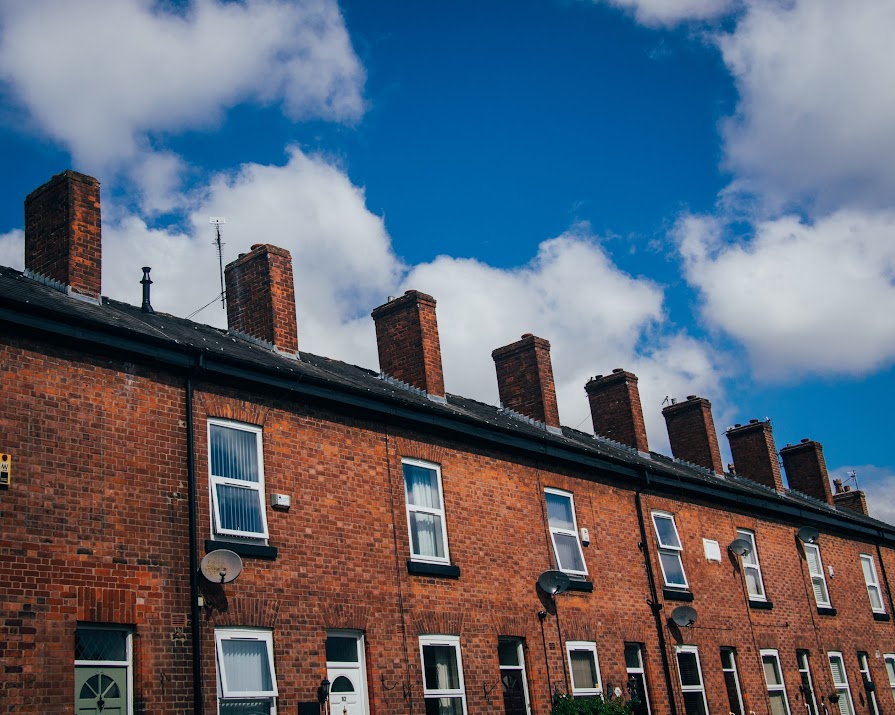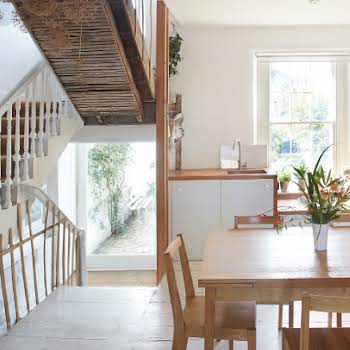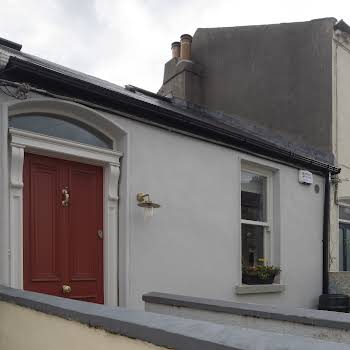
Room to Improve quantity surveyor Claire Irwin shares her expert advice on making your home more energy efficient
By Megan Burns
01st Jul 2022
01st Jul 2022
From where to start, to the ins and outs of things like insulation and renewable heating systems, Claire Irwin gives us a comprehensive guide to reducing your energy costs.
With rising energy costs, the best way to improve our homes to make them more energy efficient is on plenty of people’s minds at the moment.
The benefits, from having a warmer, more comfortable home, to lower energy costs, improved home value and a lower environmental impact are not hard to see. However, with so many options, it can be hard to know how to go about this.
It’s always best to get the advice of a professional, and quantity surveyor Claire Irwin is a familiar face to many from her appearances on RTÉ’s Room to Improve. We asked her for her expertise to help guide you through this seemingly complex process.
Where to start
Often, the variety of options when it comes to improving your home’s energy efficiency causes people to fall at the first hurdle. With so many to weigh up, they end up doing nothing, but Claire’s advice is to start simply.
“First things first, establish what the Building Energy Rating (BER) for your home is and access your property’s advisory report if there is one already carried out. You can check if a BER certificate has ever been published for your property on the SEAI’s website using your electricity’s MPRN as a search reference,” she says.
This gives you a starting point, a rating for the current efficiency level for your home from A to G. A-rated homes are the most energy-efficient, while G-rated are the least.

An advisory report is also a great help, Claire explains. “If you have an advisory report, you already have a personalised roadmap on how to upgrade your home to a target of a B2 energy rating, or better. This is in line with the national targets within the Climate Action Plan.
“Your advisory report includes colour-coded performance indicators for your home’s current status and its potential if you were to install the report’s recommended upgrades. The report also lists out a package of recommended upgrade works to improve your home to a B2 or better. It will provide a ‘fabric first’ approach to achieve an improved BER and show approximate cost indicators and information on whether grant funding is available for each measure. The advisory report is essentially an energy improvement plan tailored to your home. This plan can then be used as a guide for current upgrade works and for future works to your home if your budget does not allow for all works to be carried out right now.”
If you do not have a BER certificate for your home, Claire says, you should hire a BER Assessor to carry one out before committing to any work. The SEAI’s website contains a national register of BER Assessors, and when the assessment is completed, you will receive a BER certificate and an advisory report specific to your home.
“Talk to your BER assessor and ensure that you fully understand all the information provided to you,” Claire emphasises, as it’s the best way to know the right kind of improvements for your home.
After you have a BER Certificate and advisory report, Claire says that it’s often a good idea to then consult with an architect or a quantity surveyor to help steer you in the right direction and give you an indication of how much the work will cost.
What options are available?
It’s important to remember that while you can make big changes to your home, there are also small ways you can begin to reduce energy costs. These include replacing your lightbulbs with low-energy LED bulbs, replacing old electrical appliances with new efficient versions, insulating your hot water tank and heating pipes to reduce heat loss, and investing in smart controls for your heating system so you have precise control of where and when you want heat in your home.
The next step up, Claire says, would be to upgrade your existing building fabric. “Insulation will reduce heat loss and the cost of your energy bills. Insulate your attic and external walls with cavity wall insulation, internal wall insulation (dry lining) or with external wall insulation.”

Floors can be insulated too, she points out. “If you are digging up your floors, now is the time to insulate them. Upgrade single glazed windows which lose a huge amount of heat with new efficient double or triple glazed windows. Seal up those gaps and drafts from existing windows and dramatically reduce air leakage and heat loss in the home.”
After the building fabric has been improved, the next option is to upgrade your heating system. “Renewable heating systems offer lower energy costs and reduce carbon emissions,” Claire explains. “Upgrading to an air-to-water or a ground source heat pump system for example, will reduce your running costs and carbon emissions. Grant funding up to €6,500 is available under this measure.”

Another option is to install solar panels for water heating, or PV panels. Claire explains the difference between the two systems. “A solar thermal system will transform energy from the sun into hot water for your home. Solar PV panels will generate renewable electricity for your home. If it is a case that you cannot afford to do these works right now, future-proof your home by installing the electrical provisions now during your retrofitting works so that the disruption is minimal if you decide to install solar or PV panels later.”
For anyone carrying out these kinds of works, Claire advises ensuring the home’s ventilation is in good condition to avoid unintended consequences such as poor air quality, condensation, dampness and mould, and to ensure that you employ reputable and approved contractors to carry out your upgrade works. “Gaps around insulation create a route for heat to escape. Poorly installed heat pumps are costly to run. Make sure you use experienced tradespeople. Ask for references and check them out before contracting any works out.”
If you’re unsure about the value of carrying out improvements, Claire advises doing some calculations, which a quantity survey or contractor can help with.
“Assess what your current running costs are to heat your home, provide hot water and electricity within the existing building fabric. Then calculate what the expected running costs will be following your upgrade works. It is valuable to review the whole life cycle cost of a building. You may be surprised by the financial savings that you will reap because of your upgrade works. I’ve had clients whose energy bills have been cut by up to 70% subsequent to a retrofit!”
What grants are available, and how can you apply?
Based on your budget and your financial position there are then three grant funding routes available to you to help fund the cost of the upgrade works from the SEAI, Claire explains. It’s important that you decide on your grant funding route and apply for the funding ahead of commencing any works.
Importantly, Claire points out, “Completely free energy upgrade works are available to those in receipt of certain welfare benefits. In this instance the SEAI will carry out all works free of charge.”
If your project is on the small to medium scale, individual energy upgrade grants of up to 80% funding can be offered. “This option is really good for homeowners where the budget does not allow for all energy upgrade works to be carried out right now,” Claire says.
“Under this set of grants, you can claim funding for the works you choose to do now and then later if you have a budget to do further works you can then access grant funding for those works then. An example would be if you were to decide to insulate your attic now, you could claim €1,500 for these works. Next year if you want to change your gas burner to an air-to-water heat pump you could then claim the €6,500 grant for that. You can add to your upgrade works as and when you can afford to carry the works out.”
The third option is for large scale projects, which is grant funding from a One-Stop-Shop. “In this instance the homeowner’s budget is higher and multiple energy upgrades will be carried out,” Claire explains.
“An example of this type of an upgrade would be to insulate your floor slab, install a new air-to-water heating system, insulate your walls, attic and install new external windows and doors. 45-50% grant funding is available in this instance,” she says. “The One-Stop-Shop will completely manage the upgrade works for you and will apply for the grant funding for you also. You will only pay for the works’ net of the eligible grant which means you will never have to cash flow the grant-funded proportion of the works.”
To find out more about improving your home’s energy efficiency, watch ‘Imagine a Better Way’, a new series from Bord Gais Energy hosted by Darren Kennedy.
The series aims to educate homeowners on all things retrofitting or home energy upgrades and provide hints, tips, and tricks on how to make a home more energy efficient, and Claire appears in episode 2, along with Tom Halpin, Head of Communications at the Sustainable Energy Authority of Ireland (SEAI).
You can watch on watch on YouTube or at bordgaisenergy.ie.
This article was originally published in July 2022.























